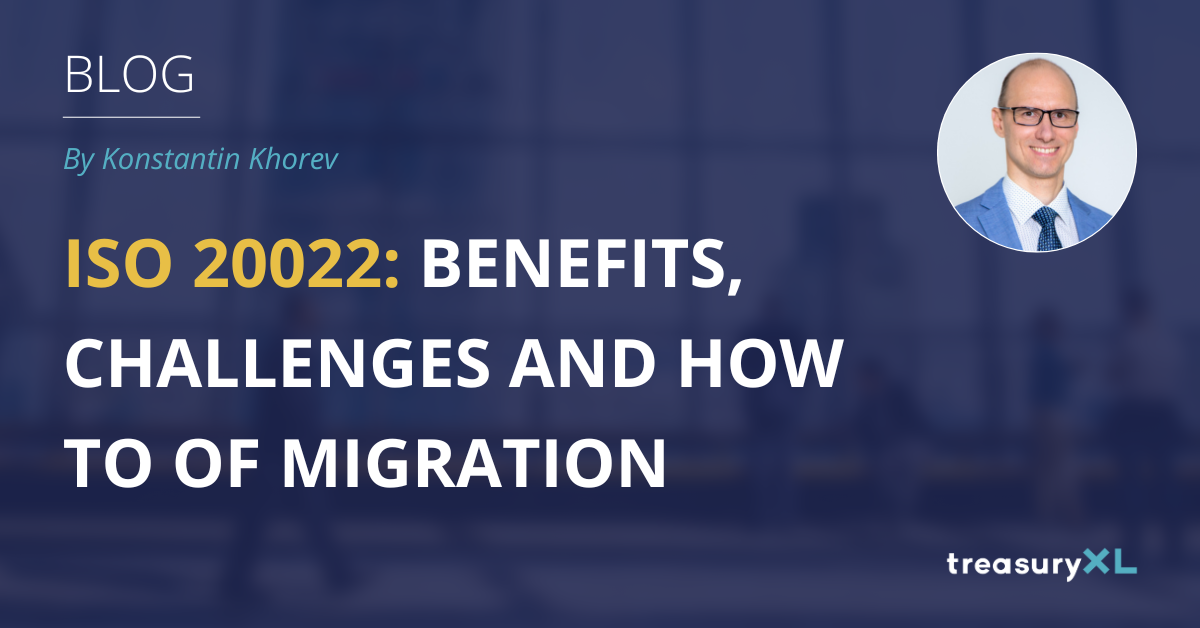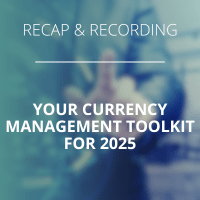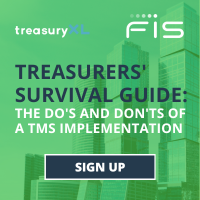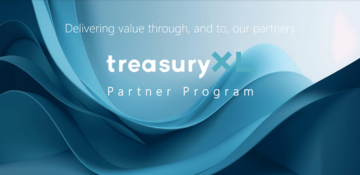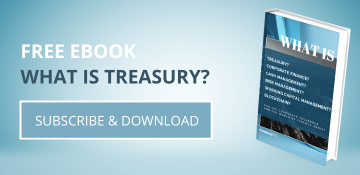November 2025 marks a deadline for financial institutions to migrate to ISO20022 standard for electronic data exchange. While it is not a deadline for corporate treasuries per se, there definitely certain things to consider and prepare for. In this article we briefly explore the benefits and challenges and provide practical guidance regarding how to approach the change.
What is ISO20022?
ISO20022 is XML-based global standard for bank payments and statements, and more. The main legacy format it replaces is txt-based SWIFT MT messaging format.
ISO20022 represents a set of XML schemes each serving a separate purpose.
Most important for corporate treasurers are the following ones:
ISO20022 Format |
Function |
Legacy MT format |
| pain.001 | credit transfers initiation | MT101 |
| pain.008 | direct debit Initiation | MT104 |
| camt.053 | EOD bank statement | MT940 |
| camt.054 | intra-day bank statement | MT942 |
| pain.002 | payment status reports |
Benefits of Migration
For me as a treasury technology expert it is hard to undervalue the importance of ISO20022.
Here is the short list of benefits of the new format of data exchange:
- Better reconciliation: clearer remittance fields → fewer manual interventions.
Think only about amazing tag which ensures the reference provided by the payer in its payment file reaches intact the payee in its bank statement.
- More universal/global format, although it does not come without reservations (see also challenges mentioned on the same topic).
- Structured data instead of free text. If you ever tried to parse tag 86 in MT940 – you know what I mean.
- Enrichability of the format. Latest version of pain.001 allows you to submit UETR with which you can further utilize SWIFT GPI to track the payment status till it reaches the recipient.
- Improved automation & compliance possibilities due to richer, cleaner data.
Challenges
Well, nothing can be perfect, we all know that, and obviously you can not migrate overnight.
While in many cases the biggest challenge is to make sure your legacy system can work with new format, there also additional items to consider:
- Master data gaps: ISO20022 is stricter on missing structured addresses, city/postcode separation, etc. At the same time it is a good motivator to re-visit the quality of your master data, and make sure they are correct and reliable enough for your payment processes.
- Bank/country differences: while ISO20022 is an internally accepted standard, each country or institution may have its own required elements. As an example, Swedish banks require organization ID to be included into the header of the payment files. Think also about making local payments in some countries which may require local bank codes, etc.
- Testing and validation complexity: while XML format is technologically much more advanced than txt, in certain aspects it is also a more difficult format to work with. Think about schema validation and extra rules being to be applied and to be controlled. And do not forget that it is designed for computers and not for humans who may find it much more difficult to read and interpret.
Practical Steps to Prepare
If you are just at the start of the migration here is a short check-list:
- Inventory current MT messages and map to ISO equivalents.\
- Review both TMS and ERP capabilities to work with the new formats.
- Cleanse and restructure master data.
- Collect each bank’s implementation guide + mandatory tags.
- Prepare tools for validation (schema + business rules).
- Involve your AP and accounting team members responsible for bank statement reconciliation in ERP.
Tools You Can Use
As an acting practitioner in treasury transformation, change management and treasury technology at some moment I encountered a lack of proper tools to test the different formats and prepare for IS020022 migration. Facing this challenge I decided to develop these tools myself, and happy to share them with the community.
Here they are:
- Conversion of Excel to pain.001, both for SEPA and international payments: https://www.treasuryhost.eu/pain/
- Validation of the payment file vs pain.001 schema and review of the file content: https://www.treasuryhost.eu/solutions/painp/
- Review of the content of bank statements in camt.053 format: https://www.treasuryhost.eu/solutions/camt/
All free at www.treasuryhost.eu
Conclusion
ISO 20022 is the modern, XML-based global standard for payments and bank statements, bringing significant advantages through richer, more structured data and stronger automation and reconciliation capabilities.
Migration, however, also introduces stricter master-data requirements, country- and bank-specific implementation rules, and the need to manage more complex testing and validation processes.
The good news is that XML remains a widely adopted, long-term standard for system-to-system data exchange — meaning that once organisations complete this transition, no further major format migrations are expected for the foreseeable future.

